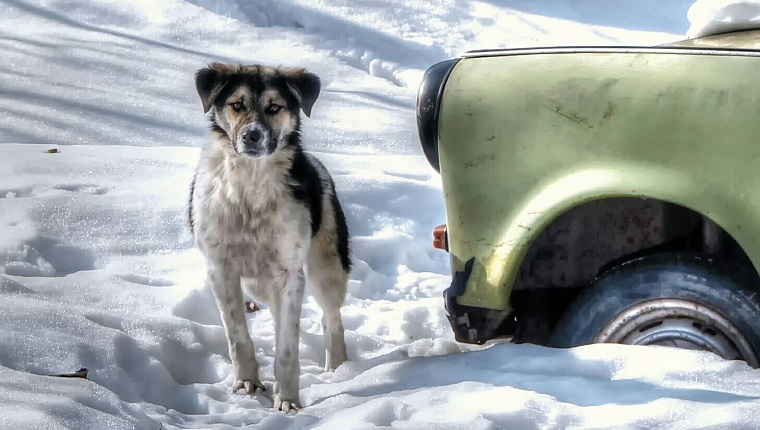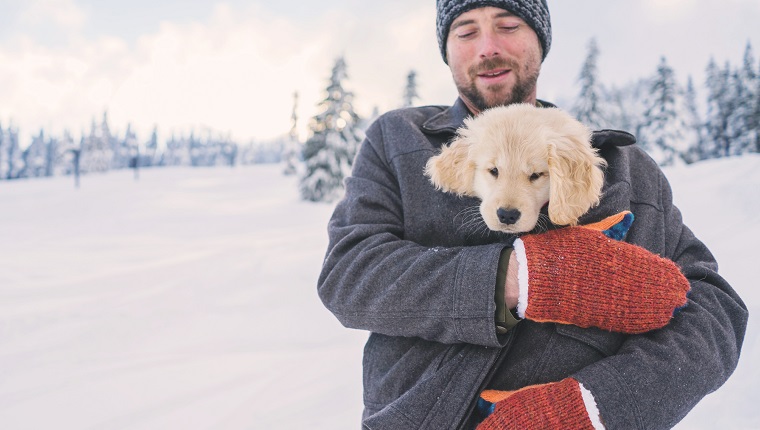Subzero temperatures can be tough — not just physically, but also mentally. Staying cooped up indoors has its downsides, and the same can be said for our dogs. However, we all need to take precautions in this weather, and that means spending more time inside.
With the extreme cold brought on by a polar vortex, spending any time outside can be dangerous for humans and pets, alike.
When the frigid weather hits, make sure to keep your dog safe with these simple tips.
1. Let Them Stay Indoors As Much As Possible
No matter how fancy their doghouse may be, let your dog stay inside the house at all times. The level of cold we are experiencing is quite extreme, and even dogs with thick fur coats may have trouble handling these temperatures.
Power up your home’s heaters to battle the freezing cold outside, and have your dog warm and toasty beside you.
“When we get below single digits, it’s too cold. They don’t have a way to warm up,” said Porter County Animal Shelter director Toni Bianchi. “Your doghouse is still going to be cold, and there’s no place for your dog to warm up.”
Below zero temperatures that dip to even negative double digits will also make dogs vulnerable to frostbite or hypothermia without much warning. It’s even worse for very young or very old dogs because their bodies and immune systems are a little more fragile.
Perhaps the only exception to staying indoors is during their potty breaks. Even then, some extra precaution needs to be taken. If your dog refuses to go outside for potty breaks, it may be better to rely on washable wee wee pads so they can do their business safely indoors.
2. Dress Them In Protective Gear Any Time They Step Out
Dogs with short, thin, or even medium-length fur coats absolutely need more protection from this kind of cold. At polar vortex temperatures, it takes very little time for hypothermia to set in. Even some dogs with thicker coats may benefit from additional protection.
Consider purchasing a winter jacket for your dog to help keep them safe in the elements. Check the sizes and shapes before you buy to make sure it will fit your dog.
Doggy boots are actually one of the most important things you can provide your dog this season. Paw injury is real, even in the snow, and your pet’s pads are vulnerable to more than just the extreme cold. Road salt can easily damage their paws. Licking the road salt or spilled antifreeze off when they come back inside can also make them sick.
When your dog comes back inside, towel off any excess snow that may be caught in their fur. This will be a little easier if they wear protective gear, but make sure to get snow out of their coat.
Excess snow can reduce their body temperature or hold dangerous salt and chemicals from outside. Let their winter gear dry in a place where they won’t be able to lick any dripping water from melting snow.
Invest in good winter wear for your pet. This can make all the difference for surviving the cold and being warm and safe during those regular, short walks outside.
3. Keep Them Away From Cars

Antifreeze leaks from cars are common during the winter season. Your pet may unwittingly ingest some because of the sweet taste of antifreeze. They can also pick it up on their paws if they step on a place where some of the fluid spilled.
Even a small dose can be fatal to your dog’s kidneys. It’s best to keep your dog indoors where it’s safe, but if you do have to take them out for a walk, be conscious of where you park your car and avoid that space.
Stay clear of parking lots or other parked cars, too, and be mindful when crossing streets where cars pass. Not only is there a danger of antifreeze spills, but cars also have a harder time braking on icy roads.
4. Keep Up With Indoor Activities
Just because it’s cold outside doesn’t mean your dog should skip their daily exercise. A lack of outdoor exercise can cause boredom, anxiety, and destructive behavior in the house.
Regardless of space, there are many exercises and activities that can be done indoors. Play fetch in rooms that have the least number of breakables. Keep an eye on their diet. Fewer expended calories means trimming down on excess portions.
Active indoor dogs also need a different kind of monitoring. Pet parents with indoor plants, flowers, or mini gardens need to be careful of the plants accessible to their dogs. Keep flowers like lilies and daffodils out of their reach because they can be toxic to pets.
How are you keeping your dog warm and busy this super cold season? Are you cuddling up with your pup when it’s freezing outside? Let us know your own to-do list below!
Related articles:









